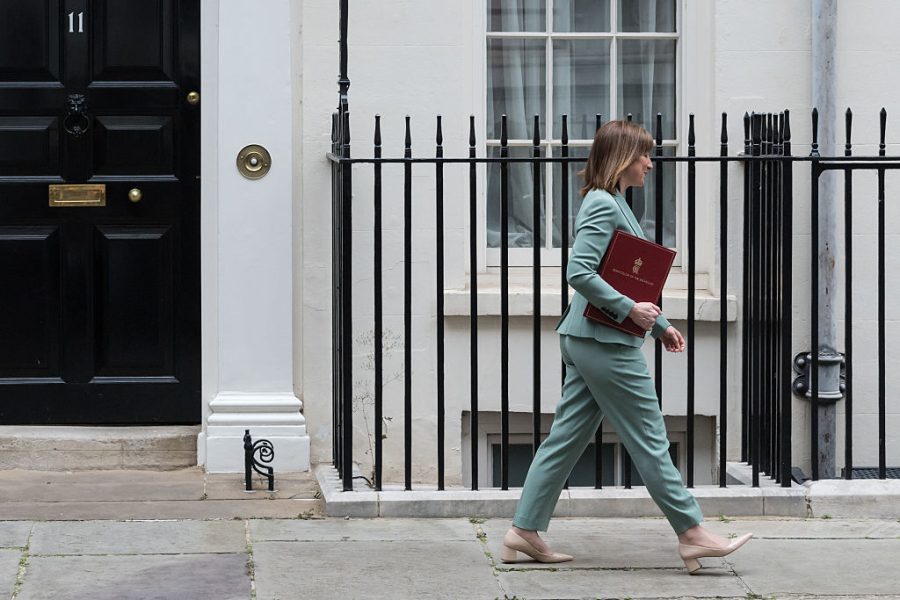Rachel Reeves is trapped in an economic ‘doom loop’: high debt, low growth and higher debt again. But, as pessimists’ eyes turn to the Chancellor’s Budget next month, there is a way she can turn that loop into a ‘virtuous circle’.
The doom loop theory of Reeves’s economy has so far gone like this:
- Following a fiscal event, tax receipts come in lower than expected, growth forecasts are downgraded, inflation forecasts rise – and a fiscal ‘black hole’ emerges.
- To fill in the hole, the Chancellor hikes taxes because her backbenchers won’t let her make cuts.
- The tax hikes further hamper growth, weighing down employment as companies struggle under the burden.
- The Chancellor calls another fiscal event – and we return to step one.
But history doesn’t need to keep repeating itself. After all, much of the pressure on the public finances has come from soaring gilt yields, which push up debt interest payments. And much of the reason those yields remain higher than any other major economy is because of how loose and thin the Chancellor’s fiscal policy has been.
Since 2016, when Reeves’s Tory predecessor George Osborne introduced a similar version of her ‘iron-clad’ fiscal rules, the amount of economic leeway each chancellor has been left with has diminished. On average, Osborne left himself with £32 billion headroom after each fiscal event, as did Philip Hammond. Under Rishi Sunak, it fell to £25 billion. Jeremy Hunt’s headroom plunged to £10.1 billion, before Reeves pulled it down further to £9.9 billion.
much of the reason those yields remain higher than any other major economy is because of how loose and thin the Chancellor’s fiscal policy has been
When she delivers her second Budget on 26 November, the expectation is that the Chancellor will give herself wafer-thin headroom again, using tax rises to restore the £9.9 billion she was left with in the spring. But, if she were to dig deeper and increase the size of that fiscal buffer, she could turn the doom loop into what Oxford Economics advisers described this week as a ‘virtuous circle’.
This is an inversion of the doom loop logic: if Reeves gave herself more headroom, there would be less likelihood of another ‘black hole’ to fill before the next election. This would reassure the markets, which would reward the Chancellor with lower gilt yields and reduce debt costs. If Reeves can improve the gilt yields by just half a percentage point, that could cut as much as £5 billion from government debt servicing costs by 2029–30. The fiscal forecasts will therefore improve and the yields will drop again, further reducing the cost of debt, etc.
Although this is an appealing and sensible strategy, the problem for Reeves is that it would almost certainly require breaking her manifesto pledge not to raise the big three taxes: income tax, employee national insurance and VAT. Turning a £20 billion shortfall into a £15 billion margin of error through niche taxes alone would likely be so punitive on the wealth-generating parts of the economy that she would get stuck in the doom loop again.
The other option, of course, would be to bring in substantial spending cuts. Welfare reform 2.0 might be a good place to start, but Reeves would have to go a lot further than shaving £5 billion off the forecast £100 billion sickness and disability benefit budget, as Liz Kendall tried and failed to do this summer. Whether rebellious backbenchers would tolerate this approach, though, is another issue entirely.
Taxing her way out of the doom loop – especially without touching the big three – is laden with risk. But a decisive break without spending that can convince the markets Labour’s serious about long-term stability might just do it. The question is whether Rachel Reeves is ready to take that gamble.







Comments